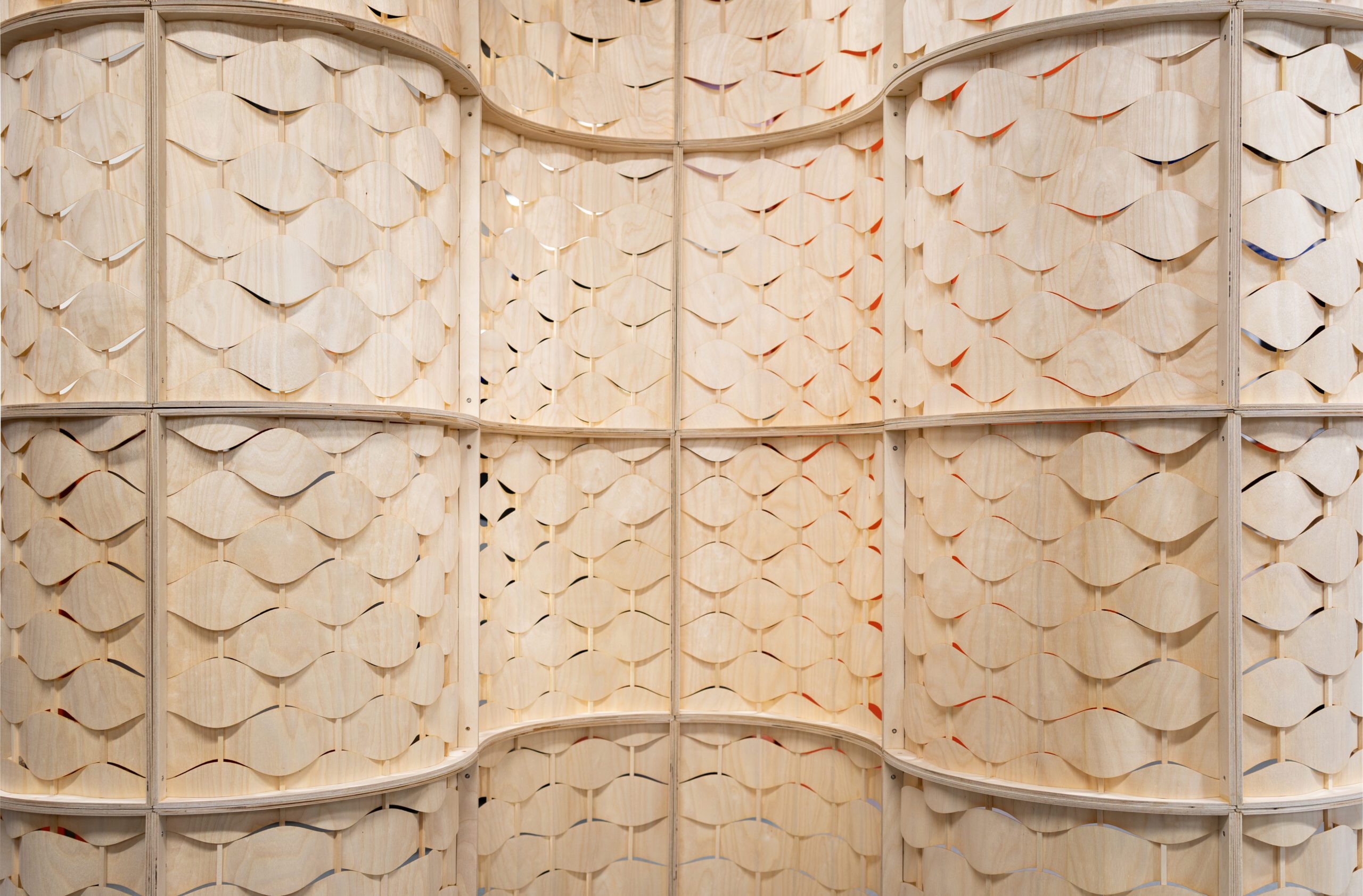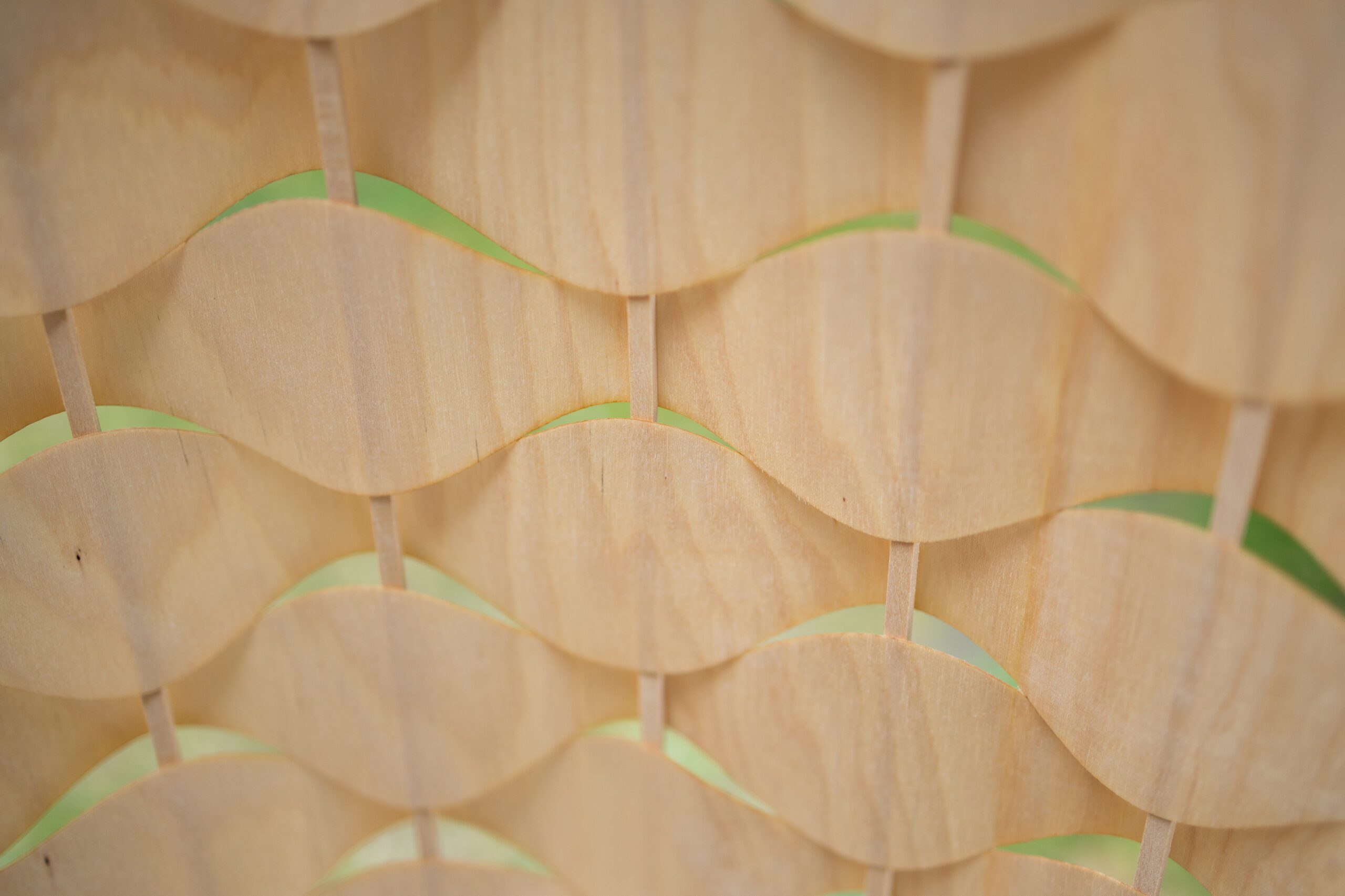Project development: United Kingdom
Woven Breathing Façade reimagines architecture as a living, adaptive organism. Conceived as a self-regulating system, it passively responds to heat, humidity, and rainfall by harnessing the hygroscopic properties of wood. Without electricity or mechanical components, its woven elements expand and contract with atmospheric shifts, opening to ventilate, closing to protect, and continually negotiating with the surrounding climate.
Instead of relying on technological complexity or artificial control, the project draws on the intrinsic intelligence of natural materials. Inspired by traditional basket-weaving techniques, the façade transforms wood’s innate hygroscopic capacity into a responsive textile. Each stitch functions as a pore, tightening or loosening with environmental change, creating a living weave that breathes with its context.
Over the course of the biennale, the installation will remain in motion. Subtle shifts in temperature, humidity, and even the presence of visitors will activate the façade, turning it into a slow performance of coexistence with natural forces.
At a time of climate extremes and ecological urgency, Woven Breathing Façade offers an alternative vision for the built environment. Rather than sealed, isolated systems dependent on energy-intensive infrastructures, it imagines buildings as porous membranes—sensitive, adaptive, and alive. This bio-inspired approach proposes a radical shift in how we design and inhabit space: an architecture that does not impose control, but instead listens, senses, and evolves in resonance with the rhythms of its environment.
Acknowledgements:
Breathing Woven Façade was developed through the RESPIRE: Passive, Responsive, Variable Porosity Building Skins research project, funded by a Leverhulme Trust Research Project Grant. Special thanks to Natalia Pynirtzi for her contribution to this work; and to Oliver Perry and Nathan Hudson for their technical support. The project was undertaken in partnership with the Hub for Biotechnology in the Built Environment (HBBE www.bbe.ac.uk) funded by Research England’s Expanding Excellence in England (E3) fund.




